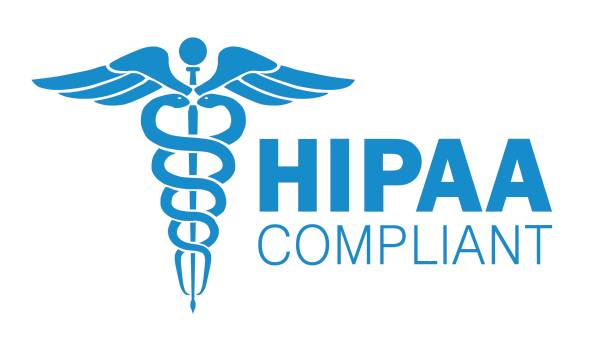Mental health professionals must have a strong online presence to connect with clients effectively. A well-designed, HIPAA-compliant therapist website is essential for building trust, ensuring patient privacy, and growing your practice. The Health Insurance Portability and Accountability Act (HIPAA) sets strict standards for protecting sensitive patient information, making compliance a top priority for therapists offering teletherapy or managing client data online. This comprehensive guide will walk you through the steps to create a HIPAA-compliant website tailored for mental health professionals, covering key features, security measures, design considerations, and marketing strategies to attract clients.
Why HIPAA Compliance Matters for Therapist Websites
HIPAA compliance is non-negotiable for mental health professionals handling protected health information (PHI). PHI includes any identifiable health information, such as client names, contact details, or session notes, transmitted or stored electronically. A HIPAA-compliant website ensures that this sensitive data is protected, fostering trust with clients and avoiding costly penalties for non-compliance, which can range from $100 to $50,000 per violation, depending on the severity.
A HIPAA-compliant website not only safeguards client data but also enhances your practice’s credibility. Clients are more likely to engage with a therapist whose website demonstrates professionalism and prioritizes privacy. Additionally, search engines like Google favor secure, user-friendly websites, which can boost your site’s ranking and visibility.
Key Steps to Building a HIPAA-Compliant Therapist Website
Creating a HIPAA-compliant website involves careful planning, secure technology, and adherence to regulatory standards. Below are the essential steps to ensure your website meets HIPAA requirements while delivering an exceptional user experience.
1. Choose a Secure Web Hosting Provider
Your website’s hosting provider plays a critical role in HIPAA compliance. Look for a hosting service that offers:
- Encryption: Ensure the provider supports SSL/TLS certificates to encrypt data transmitted between your website and users.
- Business Associate Agreement (BAA): HIPAA requires a signed BAA with any third-party vendor handling PHI, including your web host. The BAA outlines their responsibility to protect client data.
- Data Backups and Recovery: Choose a host with secure, encrypted backups and a robust disaster recovery plan.
- Server Security: Opt for providers with firewalls, intrusion detection systems, and regular security audits.
Popular HIPAA-compliant hosting providers include AWS (Amazon Web Services), Google Cloud, and SiteGround (with specific HIPAA-compliant plans). Always verify that the provider explicitly supports HIPAA compliance.
2. Implement Secure Website Design Features
A HIPAA-compliant therapist website must incorporate specific design and functionality features to protect PHI and enhance user experience. Key features include:
- SSL Certificates: Install an SSL certificate to enable HTTPS, ensuring all data transmitted is encrypted. This is critical for forms, payment gateways, and teletherapy platforms.
- Secure Contact Forms: Use encrypted contact forms to collect client information. Avoid storing PHI in unencrypted databases or email systems.
- User Authentication: Implement strong password requirements and two-factor authentication (2FA) for any client portals or admin access.
- Session Timeouts: Automatically log users out after a period of inactivity to prevent unauthorized access.
- Accessibility: Ensure your website complies with WCAG (Web Content Accessibility Guidelines) to make it usable for all clients, including those with disabilities.
For more insights on essential website features, check out The Top Features Every Therapy Website Needs to Convert Visitors into Clients.
3. Integrate HIPAA-Compliant Teletherapy Tools
If your practice offers teletherapy, integrating secure video conferencing tools is essential. Platforms like Zoom for Healthcare, Doxy.me, or VSee are designed with HIPAA compliance in mind and offer BAAs. Ensure the platform supports:
- End-to-end encryption for video sessions.
- Secure storage for session recordings (if applicable).
- Audit logs to track access to PHI.
For a deeper dive into teletherapy integration, read Integrate Video Conferencing Teletherapy.
4. Use a HIPAA-Compliant EHR System
An Electronic Health Record (EHR) system integrated with your website can streamline client management while ensuring HIPAA compliance. Look for EHR systems that offer:
- Encryption: Both at rest and in transit to protect PHI.
- Access Controls: Role-based access to limit who can view or edit client data.
- Audit Trails: Logs of all actions taken within the system for accountability.
- BAA: A signed agreement with the EHR provider.
For more on selecting the right EHR, explore Choosing the Best EHR for Your Therapy Practice: A Complete Guide.
5. Ensure Secure Payment Processing
If your website processes payments for sessions or services, use a HIPAA-compliant payment processor like Stripe (with a BAA) or Square. Key considerations include:
- Encrypting payment data during transmission.
- Avoiding storage of sensitive payment information on your server.
- Displaying clear privacy policies about payment data handling.
6. Develop a Comprehensive Privacy Policy
Your website must include a detailed privacy policy outlining how you collect, use, and protect client data. This policy should cover:
- Types of data collected (e.g., names, emails, session notes).
- How data is stored and secured.
- Client rights under HIPAA, such as access to their records.
- Procedures for data breaches, including notification protocols.
Consult a legal professional to ensure your privacy policy complies with HIPAA and state regulations.
7. Regularly Update and Monitor Your Website
HIPAA compliance is an ongoing process. To maintain security:
- Update Software: Keep your content management system (CMS), plugins, and themes updated to patch vulnerabilities.
- Conduct Security Audits: Regularly test your website for vulnerabilities using tools like Sucuri or Qualys.
- Train Staff: Ensure your team understands HIPAA regulations and best practices for handling PHI.
Designing an Engaging and User-Friendly Website
While HIPAA compliance is critical, your website must also be engaging and easy to navigate to attract and retain clients. Here are some design tips tailored for therapist websites:
1. Optimize for Mobile Devices
With over 60% of web traffic coming from mobile devices, your website must be responsive and mobile-friendly. A fast, mobile-optimized site improves user experience and boosts search engine rankings. For more on mobile optimization, see How a Fast Mobile-Friendly Website Can Boost Your Practice’s Growth.
2. Create a Professional and Welcoming Design
Your website’s design should reflect your brand and create a sense of trust. Consider:
- Calming Color Schemes: Use soft blues, greens, or neutrals to create a soothing atmosphere.
- Clear Navigation: Organize your site with clear menus for services, about, contact, and teletherapy information.
- Professional Imagery: Use high-quality images that represent diversity and inclusivity, avoiding generic stock photos.
3. Include Essential Pages
A therapist website should include the following pages:
- Home: A welcoming introduction to your practice with a clear call-to-action (e.g., “Book a Session”).
- About: Share your credentials, approach, and personal story to build trust.
- Services: Detail your therapy offerings, such as individual, couples, or group therapy.
- Teletherapy: Explain your virtual therapy options and how clients can access them.
- Contact: Provide secure contact forms and clear contact information.
- Blog: Share mental health tips and insights to engage visitors and improve SEO.
4. Optimize for SEO
Search engine optimization (SEO) is crucial for attracting clients searching for mental health services online. Key SEO strategies include:
- Keyword Research: Target phrases like “therapist near me,” “teletherapy for anxiety,” or “HIPAA-compliant therapy.”
- Local SEO: Optimize for local searches by including your city or region in content and meta tags.
- Content Marketing: Publish blog posts on relevant topics to establish authority and drive traffic.
Learn more about SEO strategies in Leveraging SEO to Attract Clients to Your Mental Health Practice.
Marketing Your HIPAA-Compliant Therapist Website
A HIPAA-compliant website is only effective if potential clients can find it. Here are proven marketing strategies to grow your online presence:
1. Leverage Content Marketing
Regularly publish blog posts, videos, or infographics on mental health topics to engage your audience and improve SEO. Topics could include coping strategies, therapy benefits, or teletherapy tips.
2. Utilize Social Media
Share your content on platforms like Instagram, LinkedIn, or Facebook to reach a broader audience. Ensure any client interactions on social media comply with HIPAA by avoiding PHI.
3. Invest in Paid Advertising
Google Ads or social media ads can target specific demographics, such as clients seeking teletherapy in your area. Ensure ad platforms sign a BAA if they process PHI.
4. Build an Email List
Use HIPAA-compliant email marketing tools like Mailchimp (with a BAA) to nurture client relationships. Send newsletters with mental health tips or practice updates.
5. Monitor Your Online Reputation
Encourage satisfied clients to leave reviews on Google or Yelp (without disclosing PHI). Respond professionally to feedback to build trust.
Common Mistakes to Avoid
When building a HIPAA-compliant therapist website, avoid these pitfalls:
- Using Non-Compliant Tools: Avoid generic platforms like standard Zoom or Google Forms, which may not meet HIPAA standards.
- Neglecting Updates: Outdated software can expose vulnerabilities, risking data breaches.
- Overlooking BAAs: Ensure all vendors handling PHI sign a BAA.
- Poor User Experience: A confusing or slow website can deter potential clients.
Partnering with a Professional Web Development Agency
Building a HIPAA-compliant therapist website requires expertise in both web development and regulatory compliance. Partnering with a specialized agency like Mental Health IT Solutions can simplify the process. They offer tailored services, including:
- Custom website design and development.
- Integration of HIPAA-compliant EHR and teletherapy platforms.
- SEO and digital marketing strategies to attract clients.
- Ongoing maintenance and security updates.
To get started, visit Mental Health IT Solutions
Conclusion
A HIPAA-compliant therapist website is a powerful tool for growing your mental health practice while ensuring client trust and data security. By choosing a secure hosting provider, integrating compliant tools, designing an engaging user experience, and leveraging effective marketing strategies, you can create a website that attracts clients and supports your practice’s goals. Stay proactive with updates and compliance to maintain a secure and professional online presence. For expert assistance, Mental Health IT Solutions is your trusted partner in building a website that meets HIPAA standards and drives growth. Contact us today to transform your online presence.







